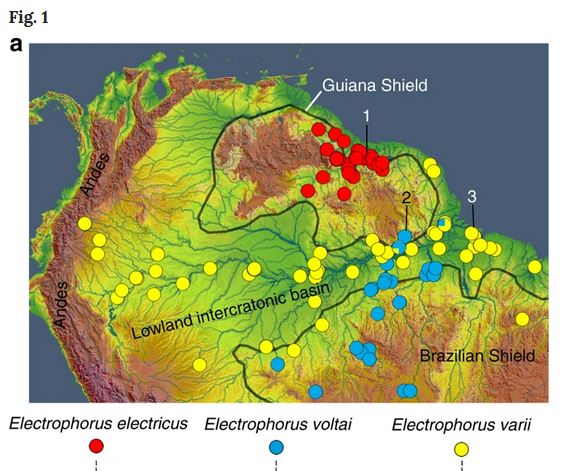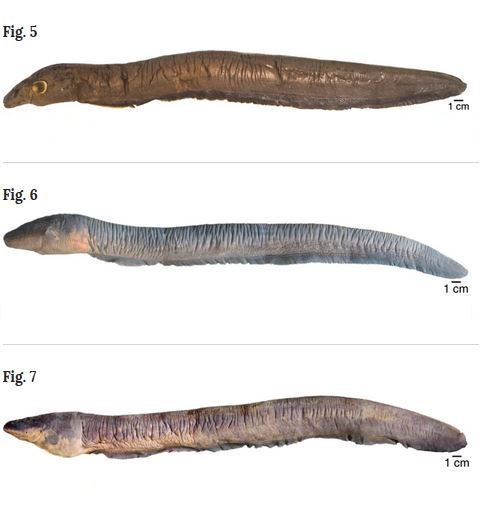Two new species of electric fish discovered in the Amazon after 250 years, an example of the great biodiversity present in the rainforest
A group of scientists from the National Museum of Natural History in Washington, led by Brazilian researcher Carlos David de Santana, discovered the existence of two new species of electric fish in the Amazon.
Until now it was believed that only one species existed of electric fish, Electrophorus electricus, described in 1766 by the Swedish naturalist Carl Linnaeus and widespread mainly in the Escudo Guayanés area.
Thanks to the new research they have been found two new species : the Electrophorus voltai, which takes its name from Alessandro Volta, and the Electrophorus varii, in homage to the zoologist Richard P. Vari.
According to the researchers, the fact that two new species were discovered 250 years after the description of the first group is one evidence of the biodiversity present in the Amazon and not only.
“We only know a small part of the planet's biodiversity. And we know even less about the biology of these animal and plant species, ”said Carlos David de Santana.

Distribution of Electrophorus species
The two new species are distributed in the Xingu and Tapajós rivers and are not considered threatened for the time being, but the current environmental crisis situation in the Amazon could put them at risk.
The Xingu River is in fact in grave danger due to the construction of the hydroelectric dam of Belo Monte, which will have a huge impact on the watercourse.
“We cannot allow biodiversity to be destroyed as that would be too great a loss. Research on this biodiversity is essential. Many of the components of the commercial medicines we use today are derived from plants and animals discovered through research on these species. Each represents a huge genetic archive.
The biodiversity of the Amazon as a whole is threatened. It is really a shame that this happens, with so many species still to be discovered. " - Santana said.
The new species they differ in the voltage emitted: Electrophorus electricus is in fact capable of discharging up to 650 volts, while the electric discharges of one of the two new species classified, Electrophorus voltai, can reach 860 volts, almost four times the voltage of a domestic socket.

E. electricus, E. voltai, E. varii in comparison
These fish produce electricity through three distinct organs in the body and use it to hunt and to defend against predators.
To search for and capture the specimens, the researchers scoured the freshwater streams of the Amazon wearing heavy rubber gloves, which didn't spare them a few electric shocks.
Although these two new species produce discharges with the highest voltage ever recorded in an animal, the discharges of a single specimen are not lethal to humans and these fish are dangerous only if present in large numbers: if you are in the water surrounded by many specimens and one of the fish discharges, they also discharge all the others and the current produced in water could kill anyone in the vicinity.
Read also:
- In the depths of Atacama, three new species of fish have been discovered that look like ... "ghosts"
- Walking amphibious fish and sneezing monkeys: new species discovered in the Himalayas
- New animal species: the most beautiful shrimp in the world
Tatiana Maselli
Photo credit: BBC


























